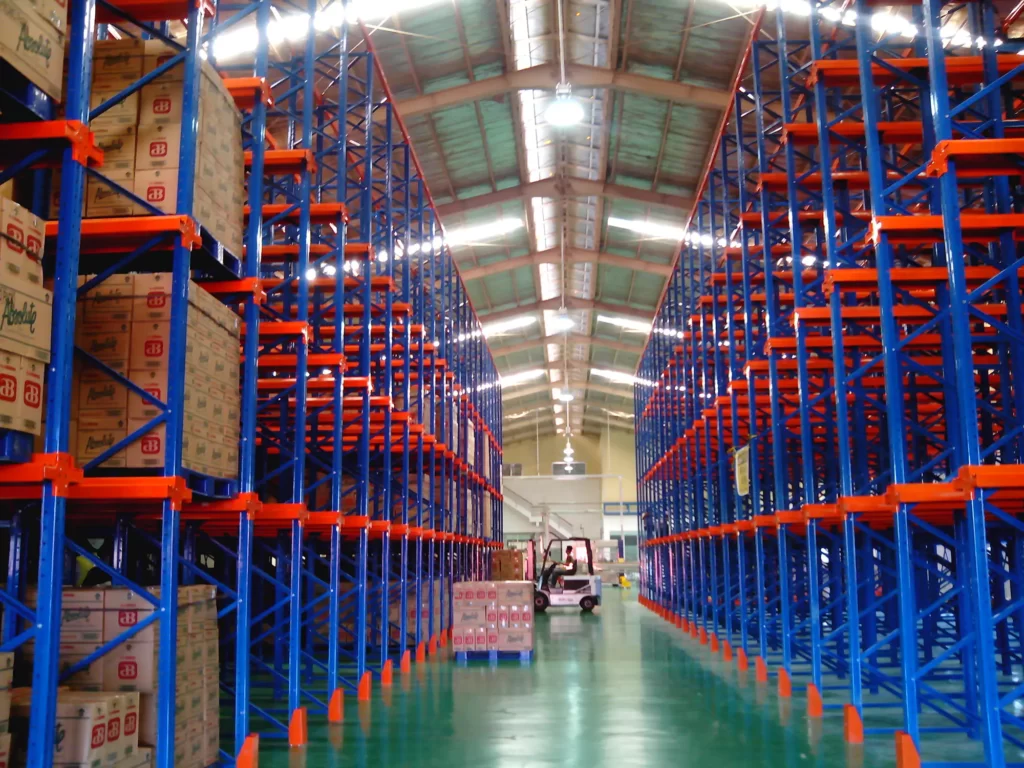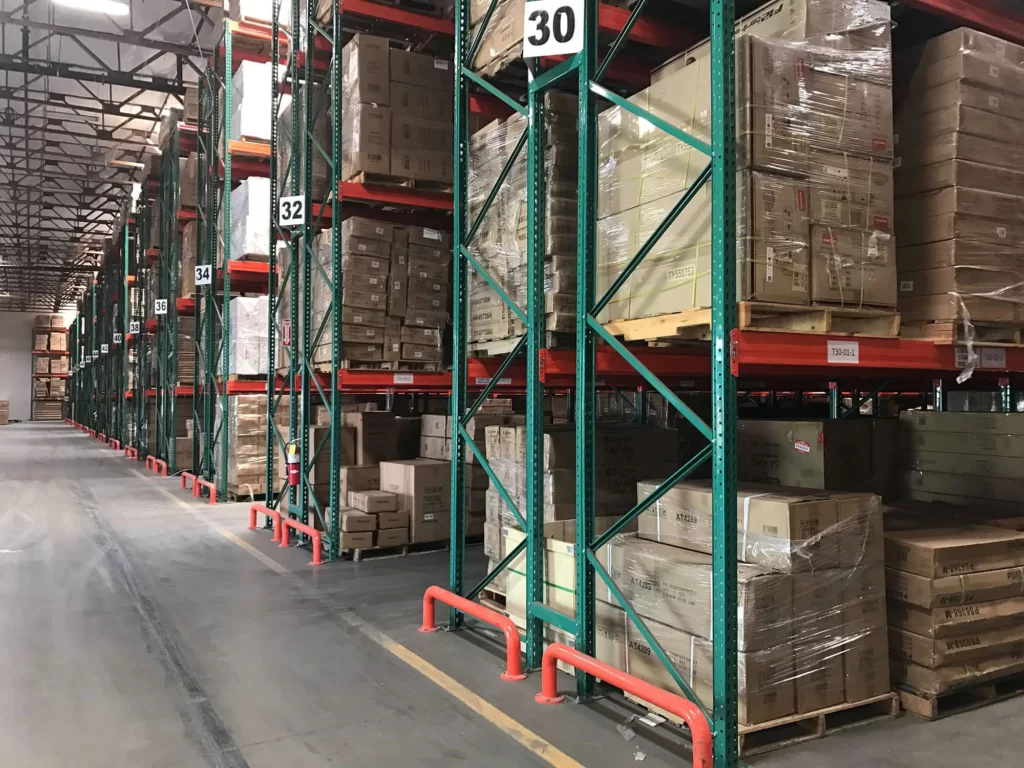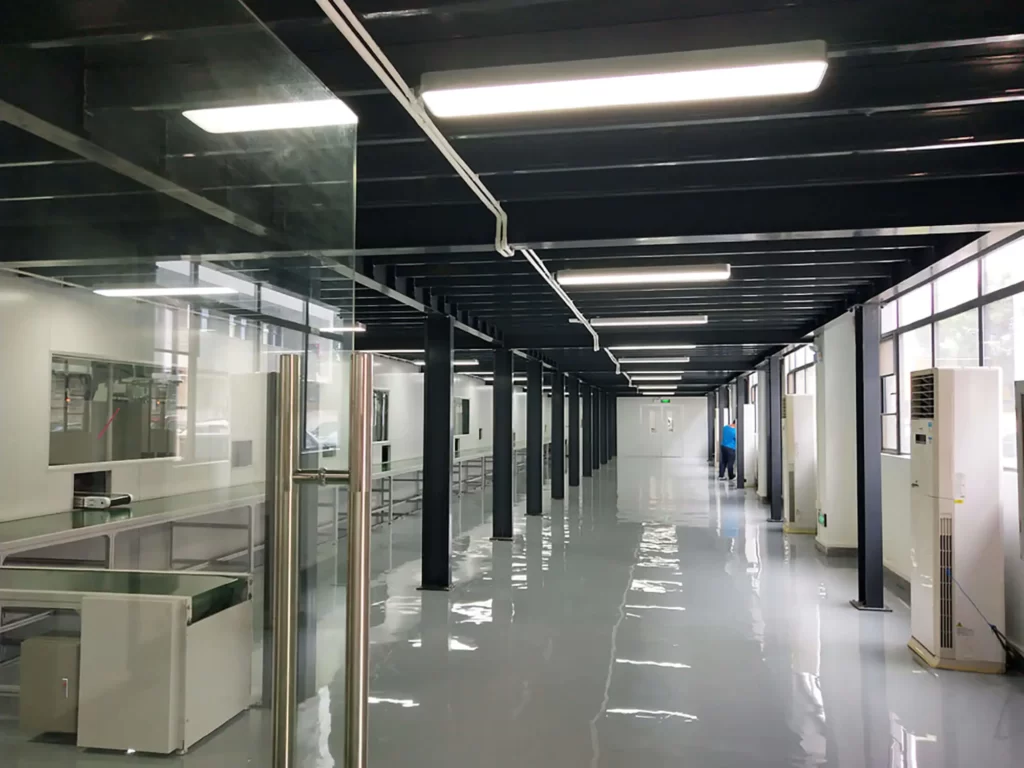Warehousing and storage are two different concepts but they are somehow correlated. Warehousing is a storage system in which goods are stored for a longer term which will be used in future resale or used for an extended period. Whereas, storage is used to store items for a shorter term because they will be needed for production or distribution in nearer time.
The purpose, duration, management system, the types of goods stored in them and the infrastructure for both have different properties. Warehouses are managed by specialized teams and are purpose-built facilities, while storage may be as simple as a vacant lot.
Do you need more space to store your inventory? You must be confused about whether to choose a warehousing or storage system. We are here to help you out with warehousing and storage concepts. Let’s discuss the details and learn more with us!
Warehousing and Storage: What Exactly Are They?
Here are the simple and key definitions for warehousing and storage that you need to understand first. Let’s start with it.
What Is Warehousing?
Warehousing is a major component of the logistics industry. Warehousing serves as a hub for the storage, management, and movement of goods. If we talk generally, warehousing involves the process of storing goods for future use or resale them accordingly. It also manages inventory to ensure that the right products are available when they are needed.
To accomplish proper inventory handling, warehouses are equipped with specialized infrastructure. It includes the following that allows for the storage of large volumes of goods:
- Loading Docks
- High Ceilings
- Racking Systems
Additionally, warehouses hire staff that is experienced professionals. This staff manages inventory, fulfills orders, and coordinates logistics operations to ensure the smooth flow of goods in and out of the facility.
Effective warehousing requires careful planning, organization, and coordination, as well as a deep understanding of the unique needs and requirements of each product. For example, certain goods may require specialized storage conditions, such as refrigeration or humidity control. So, you need to maintain the quality and safety standards accordingly.
All these results in the success of a warehousing operation which depends on its ability to efficiently and cost-effectively store and move goods. Also, make sure to achieve all this while minimizing waste and optimizing inventory management.
By providing a centralized hub for the storage and management of goods, warehousing plays an important role in the supply chain. Because it helps businesses to meet the needs of their customers and achieve their strategic goals.
Advantages of Warehousing
The advantages of warehousing are as follows:
- Warehousing provides safe and secure storage for goods until use or sale
- Offers ample space to store goods in bulk
- Facilitates easy sales near the market and avoids situations like out of stocks
- Provides financial assistance and employment opportunities
- Helps balance supply and demand which balances the prices
- Extends the life of perishable goods through cold storage
- Facilitates large-scale production by eliminating storage concerns for producers
- Performs necessary marketing activities like grading and packing
What Is Storage?
Storage is the act of preserving and keeping goods, materials, or other items in a safe and secure manner until they are needed for use. It is the most important part of the supply chain which ensures that products are available when required.
Storage, basically, involves any facility or method that is used to keep products safe until they are needed. This may include storing items in the following ways:
- In a garage or shed
- Keeping goods in a small storeroom
- Utilizing other types of temporary storage facilities
Unlike warehousing, storage generally does not involve large-scale operations or regular shipments of goods.
In nutshell, storage is essential in the supply chain process as it ensures that goods and materials are kept safe until they are needed for use. Therefore, storage is needed for businesses that keep items for a shorter term.
Advantages of Storage
The function of storage is very important which are as follows:
- Enables preservation of seasonal agricultural goods
- Allows preservation of non-seasonal goods for peak demand
- Maintains quality of goods prone to deterioration
- Facilitates speculative gain for businessmen
- Protects goods from pests and insects
- Ensures smooth production and distribution
The Difference Between Warehousing and Storage.
The primary difference between warehousing and storage lies in the scale and frequency of operations. Warehousing involves large-scale storage and regular shipments of goods, while storage can refer to any type of temporary or long-term storage facility.
We have compiled the basic yet important differences between warehousing and storage. Let’s categorize them in the following ways:
Cost
When it comes to the cost difference between warehousing and storage, there are several factors that need to be taken into account. Warehousing typically involves the long-term storage of goods for distribution. Whereas, storage refers to the short-term storage of goods before they are moved or distributed.
As a result, warehousing tends to be more expensive than storage due to the additional services and facilities required to manage the inventory and ensure the safety and security of the goods that are being stored.
Cost of Warehousing
The cost of warehousing can vary depending on several factors, that include:
- The location
- Size of the facility
- Type of goods being stored
- The length of time the goods will be stored
- The rental or lease fees for the warehouse space, the cost of material handling equipment like forklifts and pallet jacks
- The expenses related to the installation and upkeep of racking systems and storage bins
- The cost of implementing inventory management systems
- The investment in security measures such as cameras and alarm ensure the safety of the goods being stored.
- The cost of personnel, including wages for warehouse workers and managers, is a crucial aspect of warehousing costs.
- Other costs such as utilities (electricity and water) and the maintenance and repair of the facility and equipment are also factored in to determine the overall cost of warehousing.
All these expenses contribute to creating a comprehensive cost structure for warehousing, which can vary based on the type of goods being stored and the specific requirements of the business.
Cost of Storage
Storage costs are typically lower than warehousing costs due to the simpler and shorter-term nature of storage. The cost of storage generally involves fewer facilities and services compared to warehousing. Some of the components that contribute to storage costs include:
- The cost of storage is primarily driven by the rental or lease fees associated with the storage space. Unlike warehousing, which typically requires large warehouse spaces, storage space is generally smaller and less expensive to rent.
- As storage is a short-term solution, the cost of material handling equipment such as forklifts and pallet jacks might be typically minimal or non-existent.
- The nature of storage means that goods are usually kept for a shorter time and in smaller quantities, which means less complex inventory management systems are required, resulting in lower costs.
- While some level of security is required to protect stored goods, the measures required for storage facilities are generally less extensive than those for warehousing, resulting in lower costs.
- Storage facilities typically require fewer personnel than warehouses, resulting in lower labor costs.
- As mentioned earlier, storage facilities are generally smaller and require fewer resources to operate, therefore, the cost of utilities such as electricity and water is generally lower than in warehousing.
- The storage facilities are used for a shorter time, therefore it has typically less wear and tear on the facility and equipment. That as a result, lower maintenance and repair costs.
In conclusion, the cost difference between warehousing and storage can be significant, with warehousing generally being more expensive due to the additional facilities and services required to manage the inventory and ensure the safety and security of the goods being stored.
Capacity
We have already discussed the capacity difference between warehousing and storage. Here is a detailed description below.
- Warehouse and storage systems differ in their capacity due to the different purposes they serve. Warehouses typically have larger capacities compared to storage facilities. because of the fact that they are designed to store goods for a longer period of time and handle larger volumes of inventory. Warehouses often have higher ceilings, larger floor areas, and more extensive racking and shelving systems to accommodate a wide range of products.
- In contrast, storage systems generally have smaller capacities than warehouses because they are designed to store goods for shorter periods and to accommodate smaller quantities of products. Storage facilities typically have lower ceilings, smaller floor areas, and simpler racking and shelving systems.
The capacity of both warehousing and storage facilities can be customized to meet the specific needs of a business. The design and layout of a facility can be modified to create more or less space for goods.
The racking systems and storage equipment can also be adjusted accordingly. This customization allows businesses to find a facility that best meets their storage needs.
The cost of both warehousing and storage systems is closely tied to their capacity. because s facilities with larger capacities typically require more resources and equipment to maintain. Businesses can choose the facility with the capacity that best suits their needs and budget, as the cost of warehousing and storage can vary based on the capacity and services offered.
Services
The services of warehousing and storage vary in accordance with their capacity and what sort of business they offer. Warehousing and storage facilities offer a variety of services designed to help businesses and individuals store and manage their products and belongings in a safe, secure, and convenient manner.
Here is a list of warehouse services and storage systems.
Warehousing Services
- Receiving, storing, and fulfilling orders of products
- Managing inventory levels and movements
- Coordinating transportation logistics
- Providing value-added services, such as product assembly and packaging
- Offering specialized storage options, such as temperature-controlled or hazardous materials storage
- Managing e-commerce fulfillment
Storage Services:
- Storing products for short-term or long-term durations
- Managing inventory levels and movements
- Coordinating transportation logistics
- Providing value-added services, such as product inspection and repackaging
- Offering document, vehicle, and boat storage options
- Providing self-storage units for personal or business use
Location and Accessibility
The location and accessibility of warehousing and storage facilities are key considerations for businesses and individuals who need to store goods or products. There are some notable differences between the two types of facilities when it comes to their location and accessibility.
- Warehousing facilities tend to be located in or near urban centers, transportation hubs, and major highways to facilitate the movement of goods. These facilities typically have larger capacities and offer specialized services such as temperature-controlled storage, hazardous materials storage, and value-added services like assembly and packaging. However, they may also be more expensive to rent or lease as compared to storage facilities.
- In contrast, storage facilities are often located in areas with lower rents. Just because of the fact that they might be found in suburban or rural areas. These facilities typically offer fewer specialized services than warehousing. Still, it is more cost-effective for individuals and businesses with lower storage needs or shorter-term storage requirements. Also, storage facilities may be more accessible to customers with drive-up units that are available for easy loading and unloading.
When considering the location and accessibility of warehousing and storage facilities, it’s important to take into account factors:
- Proximity to transportation hubs
- Customers
- Suppliers
- Availability of land, utilities, and infrastructure
- Accessibility to different modes of transportation
- Loading docks
- Maneuvering space
Ultimately, the choice between warehousing and storage facilities will depend on the specific needs of the business or individual.
Types of Warehousing and Storage.
The key difference between warehousing and storage can be seen in the types of each category. Let’s explore what they are and what differences they have in them.
Types of Warehousing
Public Warehouses
A public warehouse is a storage facility that is accessible to the general public for the storage of goods and products. Typically, public warehouses are operated by third-party logistics providers. These facilities offer a variety of storage and distribution services ranging from short-term to long-term storage options. It provides specialized services like inventory management, order fulfillment, and transportation.
Public warehouses provide businesses and individuals with flexible and cost-effective storage solutions for their storage needs. It allows them to pay only for the space they require while avoiding the capital investment and maintenance costs of owning or leasing a private warehouse.
Private Warehouses
A private warehouse is another type that is exclusively owned and operated by a business or individual. These types of facilities are typically utilized by businesses that have specific storage needs or require specialized storage conditions. These situations might include hazardous materials storage or temperature-controlled environments.
Private warehouses offer the owner full control over the storage space. So that it can be customized to meet specific requirements such as inventory management, order fulfillment, and transportation.
However, constructing or leasing a private warehouse requires substantial capital investment and ongoing maintenance costs. Private warehouses may be a viable option for businesses that need dedicated storage solutions for the long term and have the financial resources to support them.
Bonded Warehouses
A bonded warehouse is a licensed facility for storing imported goods before they are cleared through customs. It allows importers to delay paying customs duties and taxes until the goods are sold domestically.
These facilities are tightly regulated by the government and operated by logistics providers who also offer value-added services. Bonded warehouses play a vital role in facilitating international trade by providing secure and cost-effective storage solutions.
Refrigerated Warehouses
Refrigerated warehouses are specialized facilities used for storing perishable goods like food, pharmaceuticals, and other temperature-sensitive products. They maintain specific temperature and humidity levels to preserve product quality.
It uses various cooling systems and monitoring technology. Refrigerated warehouses play a vital role in the supply chain by providing a safe and secure storage environment that helps businesses extend product shelf life and reduce waste.
Know more about automated warehouses to get a deep insight into the technology being used for warehouses.
Types of Storage
Self Storage
Self-storage is a storage option that provides individuals and businesses with a rented unit or space to store their belongings or goods. This storage solution offers flexibility and convenience, as customers have control over their own storage unit and can access it with their own key or access code when needed.
Self-storage is a secure and flexible storage solution for short-term or long-term storage needs. It offers a range of unit sizes for storing various items, with features like surveillance cameras and security gates to ensure the safety of stored belongings. Self-storage is a popular storage option for both personal and business use due to its convenience, flexibility, and affordability.
Mini-Storage
Mini storage is a type of self-storage facility that caters to customers who require smaller storage units or lockers than those offered by traditional storage facilities. These facilities offer a range of unit sizes, from small lockers to larger rooms, making them ideal for storing items that are not required on a regular basis, such as seasonal decorations or sports equipment. Mini storage facilities are often situated in urban areas, providing customers with a convenient storage solution that is easily accessible.
Mini storage units are typically rented on a month-to-month basis, making them a cost-effective storage solution for people who require additional storage space for a short period of time. These facilities offer flexible access hours, allowing customers to access their units at their convenience. Additionally, many mini-storage facilities offer climate-controlled units, ensuring that stored items are protected from extreme temperatures and humidity.
Vehicle Storage
Vehicle storage is a type of storage designed specifically for vehicles such as cars, trucks, boats, motorcycles, and RVs. It provides a secure and convenient solution for people who need to store their vehicles for extended periods, offering a range of unit sizes and flexible rental options.
Vehicle storage facilities are typically secured with features such as security cameras and alarms and may offer climate-controlled units to protect vehicles from extreme temperatures and humidity.
Vehicle storage units come in various sizes, and some facilities offer covered parking spaces or enclosed units for additional protection. Many vehicle storage facilities offer additional services like detailing, maintenance, and battery charging.
This type of storage is useful for people who have limited space at home or need to protect their vehicles from damage caused by exposure to the elements, theft, or vandalism. It is also a convenient option for people who are moving to a new location and need to temporarily store their vehicles until they can be transported.
Final Words
Warehousing is a process used by businesses for long-term storage, management, and distribution of goods on a large scale. It is being used for additional services like packaging, labeling, and transportation. In contrast, storage is a more general term referring to the temporary or long-term storage of goods.
It is used for personal or small business use, with a range of unit sizes and rental options. By understanding the differences between the two, individuals and businesses can select the appropriate storage solution to optimize efficiency and minimize costs. To know more about warehousing and storage related issues, you can contact a trusted yet easy-to-approach warehousing solutions company.








